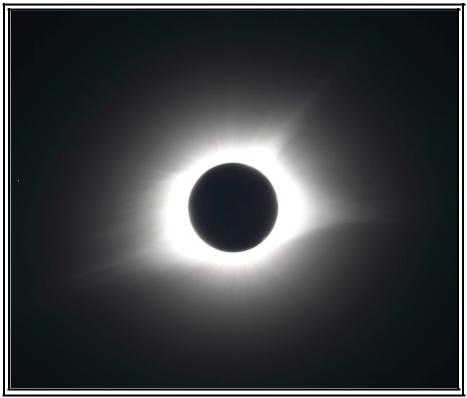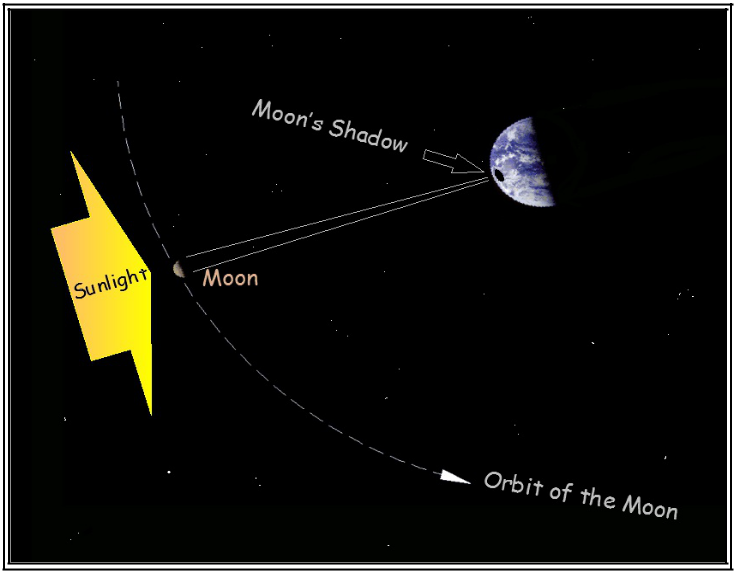by Jeff Hutton

Hello Astronomers! One of the things I love about observing the night sky is that what we see in the sky makes sense, once you apply a little thought to them. For example, think about shadows. You know, light can’t go through solid stuff like your house or your head. Let’s think about shadows.

Here’s a picture I took from the roof of my house that shows my shadow. Sunlight is blocked from reaching the ground. The shadow of my head is located at the anti-solar point .

Knowing where the anti-solar point is, helps us to understand a lot about how the Sun affects what we see in the sky. More about that in future articles.
I promised that I would talk to you about eclipses. A solar eclipse happens when the Moon’s orbit carries it to a point in space directly between the Sun and just a small spot on the Earth. The Moon makes a shadow on the Earth just a few miles wide and people like me go to a lot of trouble to get to that spot on Earth just to be in the Moon’s shadow. We love to see scenes just like this!

Here is a picture I took from just the right place and at just the right time in 2017 of the total solar eclipse. We were in Hopkinsville, Kentucky. You’re seeing the night side of the Moon exactly in front of the sun. This view was about as bright as the Full Moon.
This is the ONLY time it is safe to look toward the Sun without special glasses.
The best rule is that you should NEVER look toward the sun. You can cause permanent eye damage or be blinded for the rest of your life. There are special filters and other ways to observe the sun. When we can have in-person talks again at the FOC, I’ll tell you about some of them.

Here’s a picture taken from space at the same time as I took my picture above. Can you make out the shape of North America? The Sun was completely covered-up at the very center of the shadow shown on the Earth. The anti-solar point is at the center of the Moon’s shadow.

This diagram shows how sunlight on its way to the earth is stopped by the Moon. So the Moon casts a shadow, just like your head, the Moon and the Earth!

The other kind of eclipse is called a lunar eclipse. I took this picture in 2014. The Earth is much bigger than the Moon. So the shadow that the Moon makes on the earth is pretty small. But the Earth’s shadow is much bigger. It’s so big that the entire Moon can fit inside it! So when this happens, the whole Moon can go dark. The Earth’s the anti-solar point is at the center of its shadow.

Most of the time the Moon looks white and grey but during a lunar eclipse it turns a reddish-orange. That’s because some of the light from the Sun is bent around the Earth by its atmosphere. Did you know that the moon is about as reflective as a piece of black construction paper? Lunar eclipses can turn the Moon almost black or a light orange. More about that later.

could stand on the Moon during a lunar eclipse.
We would near the Earth’s anti-solar point.
Right: This is an real image of the Earth during a solar eclipse, showing the shadow of the Moon as a dark blotch. The anti-solar point is at the center of the shadow.
There’s a lot to know about eclipses. Next time we’ll learn more about when to look for an eclipse and what we can expect to see!
For a printable PDF click HERE.

0 Comments